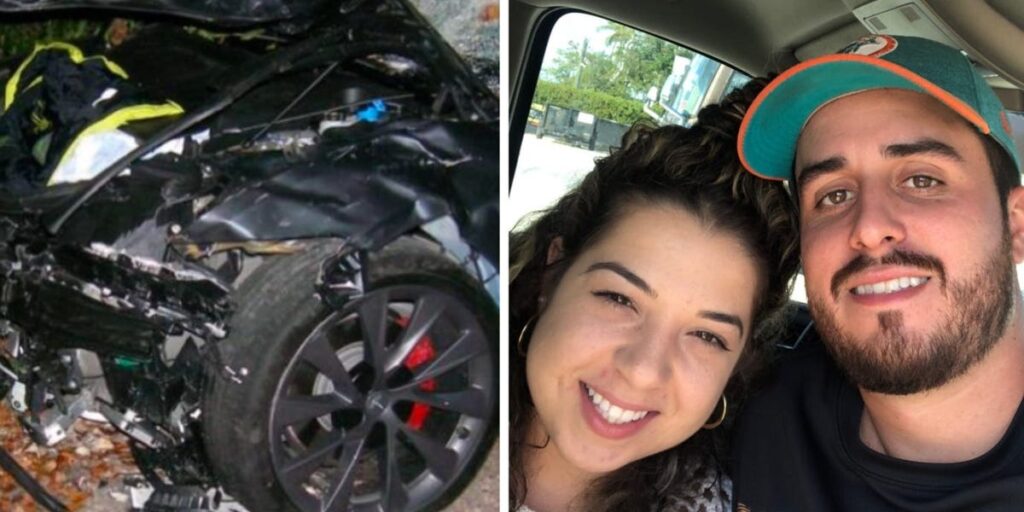In a major blow to Tesla, a Florida federal jury on Friday found Elon Musk’s electric car company partly to blame for a 2019 crash that left a 22-year-old woman dead and her boyfriend seriously injured.
The jury sided with the plaintiffs, awarding the family of Naibel Benavides Leon and her boyfriend, Dillon Angulo, a combined $329 million in total damages.
The verdict marks a substantial setback for Tesla and its Autopilot driver-assistance feature that the attorneys for the plaintiffs said was engaged at the time of the deadly collision and had design flaws.
It follows a three-week civil trial that included testimony from Angulo, Benavides Leon’s family members, and the driver of the Tesla that plowed into a parked SUV and struck the couple as they were stargazing outside the vehicle alongside a Key Largo road.
The case stems from a wrongful death lawsuit that the plaintiffs brought against Tesla. The lawsuit argued that the car maker’s vehicles were “defective and unsafe for their intended use.”
Tesla, the lawsuit said, programmed Autopilot “to allow it to be used on roadways that Tesla knew were not suitable for its use and knew this would result in collisions causing injuries and deaths of innocent people who did not choose to be a part of Tesla’s experiments, such as Plaintiffs.”
“Despite knowing of Autopilot’s deficiencies, Tesla advertised Autopilot in a way that greatly exaggerated its capabilities and hid its deficiencies,” said the lawsuit, which pointed to multiple comments from Musk touting the safety and reliability of the software.
Tesla driver George McGee had Autopilot on when his 2019 Model S blew past a stop sign and a flashing red light at a three-way intersection and plowed into Angulo’s mother’s Chevrolet Tahoe at more than 60-miles-per-hour, the lawsuit said.
McGee — who previously settled a separate lawsuit with the plaintiffs for an undisclosed amount — said he had dropped his cellphone during a call and bent down to pick it up moments before his Tesla, without warning, T-boned the Tahoe.
He testified during the trial that he thought of Autopilot, which allows the vehicle to steer itself, switch lanes, brake, and accelerate on its own, a “copilot.”
“My concept was it would assist me should I have a failure” or “should I make a mistake,” McGee said in testimony, adding, “I do feel like it failed me.”
“I believe it didn’t warn me of the car and the individuals and nor did it apply brakes,” McGee testified.
Attorneys for Tesla have argued that McGee was solely responsible for the April 25, 2019, crash.
In the trial’s opening statements, Tesla attorney Joel Smith said the case was about a driver, not a “defective vehicle,” and had “nothing to do with Autopilot.”
“It’s about an aggressive driver, not a complacent driver, a distracted driver who was fumbling around for his cellphone,” Smith said. “It’s about a driver pressing an accelerator pedal and driving straight through an intersection.”
Tesla’s attorneys said that just before the crash, McGee hit the accelerator, overriding the vehicle’s set cruising speed of 45 miles per hour and its ability to brake on its own.
Autopilot mode, Tesla says on its website, is “intended for use with a fully attentive driver, who has their hands on the wheel and is prepared to take over at any moment.”
Read the full article here


